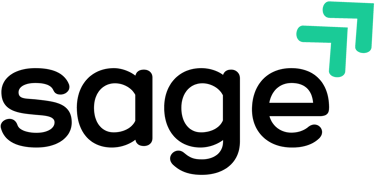One Board, One Voice: Tools That Move Alignment from Concept to Capability
Board alignment isn’t about agreement—it’s about clarity, coherence, and collective direction. In this article, Board Chairs and Lead Independent Directors will discover the tools that help shape not just what the board decides, but how it decides together. From agenda design to decision frameworks and alignment diagnostics, these strategies turn governance into a focused, forward-moving force.


One Board, One Voice: Tools That Move Alignment from Concept to Capability
There’s a moment in every effective board’s life when alignment becomes visible. The conversation flows. Trade-offs are named. Priorities are clear. Decisions stick. The board isn’t just showing up—it’s showing up together.
But for many Boards, that moment is rare. The more common experience? Confusion around priorities. Disconnected committee work. Whiplash between meetings. Silence when consensus is unclear. All signs of a misalignment—not in intent, but in infrastructure.
As Chair or Lead Independent Director, your responsibility isn’t to force agreement. It’s to create clarity. To shape a culture where the board speaks with many voices, but one purpose. Where debate fuels insight, not inertia.
And to get there, you need tools. Not just governance frameworks—but practical instruments that build cohesion, create transparency, and foster disciplined decision-making.
Let’s explore the ones that matter most.
First: Reframe Alignment as a Capability, Not a Mood
Many boards treat alignment like weather. When it’s there, meetings feel breezy. When it’s not, everything is heavy. But alignment isn’t luck—it’s a governance capability that must be cultivated.
That means stepping back from symptoms (“We’re out of sync”) to root causes:
Are we clear on our shared priorities?
Are we using time together effectively?
Do we have a shared language for making hard decisions?
Do directors trust that their views are truly heard?
When you shift alignment from sentiment to system, you can actually build it. And that starts with how you manage inputs—agenda, materials, prep—and outputs—decisions, commitments, follow-through.
Tool 1: Decision Frameworks That Clarify Trade-offs
Boards spend enormous time discussing options—but often lack shared frameworks to evaluate them. Without a decision framework, debates meander. Directors argue past each other. And alignment becomes a function of persuasion, not principle.
That’s why the best boards use explicit tools for framing trade-offs. For example:
Impact vs. Feasibility matrices for prioritizing initiatives
Risk tolerance dashboards to surface differences early
Scenario-based simulations for capital allocation or crisis response
Weighted criteria models for CEO succession or M&A
These tools don’t eliminate debate—they structure it. They give directors a shared lens, which makes divergence feel productive, not personal.
And as Chair, you’re the facilitator of that lens. Not by dictating outcomes—but by guiding how the conversation unfolds.
Tool 2: Board-Level Strategic Anchors
Alignment falters when directors aren’t clear on what matters most. Strategic plans help—but they’re often too high-level, too long-range, or too “management-owned.”
Boards need their own version of strategic anchors. These are not rehashes of vision statements. They are 3–5 themes that define what this board is here to do this year.
Examples:
Ensure CEO transition is high-integrity and future-ready
Strengthen ESG posture ahead of regulatory shifts
Pressure-test digital investments for ROI and risk
Deepen stakeholder trust through transparency initiatives
These themes guide agenda setting. They clarify committee priorities. They provide a “why” behind every decision.
And most importantly—they create shared purpose. That’s the heart of alignment.
Tool 3: Real-Time Temperature Checks
Boards often rely on “gut sense” to assess alignment. But gut isn’t always accurate—especially when power dynamics or personalities get in the way.
Try this instead:
Use short post-meeting pulse surveys: “Did we achieve clarity today?” “Was dissent surfaced and respected?”
Use dot-voting or digital polling before major decisions to surface divergence early
Have private 1:1 check-ins with directors to sense unspoken concerns
These tools give you a read—not on agreement, but on engagement. On whether directors feel aligned enough to commit, or simply exhausted enough to comply.
As Chair, these early reads let you course-correct before misalignment calcifies into mistrust.
Tool 4: Visual Decision Logs
In fast-moving environments, boards can lose track of what they’ve actually decided. Or worse—directors walk away with different interpretations of the same discussion.
A simple tool to prevent this: visual decision logs.
At the end of each meeting, recap major decisions and rationale on screen or in writing. Include:
What was decided
Why it was prioritized
What trade-offs were acknowledged
What the follow-up will be
Then share it post-meeting as a record. This isn’t about bureaucracy. It’s about memory—and momentum.
Because when boards forget what they’ve agreed to, alignment erodes silently.
Tool 5: Governance Dashboards
Dashboards aren’t just for management. Boards can use simple tools to track progress on their own priorities.
A quarterly governance dashboard might include:
Status of strategic board themes
Progress on board goals (e.g., diversity, education, engagement)
Alignment indicators (e.g., attendance, contribution equity, peer feedback)
Key decisions made, pending, or delayed
This creates accountability within the board—not just to management.
And it shifts board culture from episodic to ongoing.
Tool 6: Shared Norms, Not Just Policies
Most boards have formal policies. Fewer have agreed norms—the informal “rules” that shape how work gets done.
Examples:
We commit to reading materials before every meeting
We limit airtime to ensure equity of voice
We name tensions instead of smoothing them over
We revisit decisions when context shifts meaningfully
These norms should be surfaced, discussed, and refreshed annually. They’re not governance documents—they’re governance glue.
And alignment without glue doesn’t hold.
Alignment Isn’t Agreement—It’s Coherence
It’s worth repeating: The goal isn’t uniformity. It’s coherence. Directors will disagree. That’s healthy. But alignment means:
We’re pointed in the same direction
We understand why a decision was made
We support it—even if we disagreed
We speak with one voice to stakeholders
This kind of coherence doesn’t emerge by accident. It’s cultivated. Practiced. Supported by tools that make it visible and sustainable.
And as Chair, your role is to steward this coherence—not to enforce it, but to enable it.
Because when the board aligns, the organization can accelerate.
Ready to turn good governance into aligned governance?
📧 Contact our team at info@sagesims.com
📅 Schedule a no-cost alignment consult at https://sagesims.com/connect
🔍 Learn more at https://sagesims.com
